|
SAGE - CANADA
Contributed by Mike Klassen
Mike Klassen tells us "My father Harvey Klassen was hired by
System Development Corporation (SDC) in early 1962, worked in the
Underground Complex in North Bay, Ontario, then transferred to Santa
Monica, California, left SDC in 1969. He didn't save much from his ...days
at SDC, but I did find a 2-page photocopied article, title SAGE Extended
into Canada, it appears to be pages 8-9 of possibly a corporate
newsletter dated June 1963, at top of first page of article is view of
main tunnel chamber, at bottom of 2nd page of article is photo of the 27
Canadian SDCers, my dad is 6th from left."
"A credit to Dave Burley, it was Dave who was able
to provide the fresh high-quality scans from his original copy of the
magazine that he saved since 1963. Also, that's Dave in the photo at
bottom right of page 1."
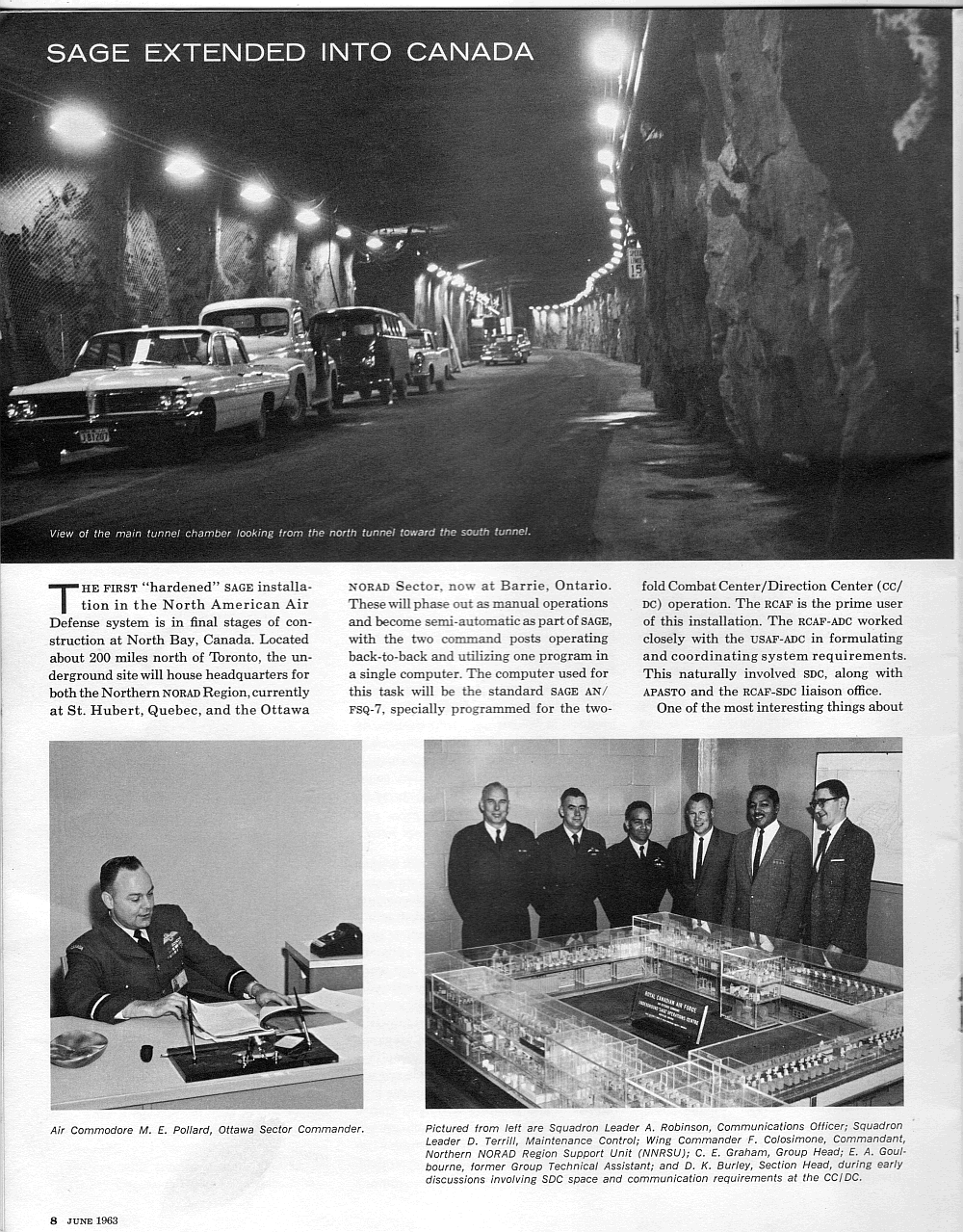
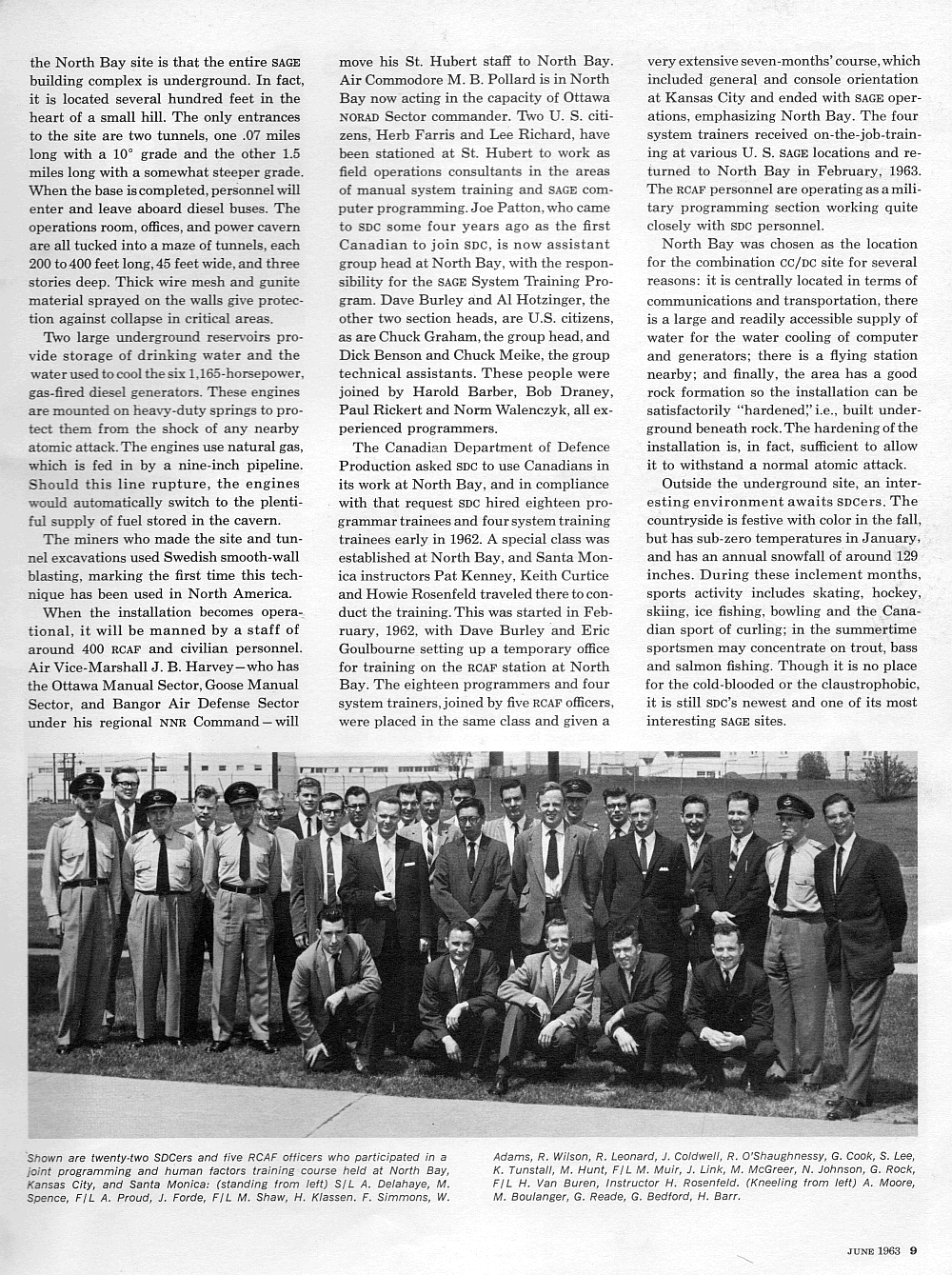
The first "hardened" SAGE installation in the North American Air Defense system is in final stages of construction at North Bay, Canada. Located about 200 miles north of Toronto, the underground site will house headquarters for both the Northern NORAD
Region, currently at St. Hubert, Quebec, and the Ottawa NORAD Sector, now at Barrie,
Ontario. These will phase out as manual operations and become semi-automatic as part of SAGE, with the two command posts operating back-to-back
and utilizing one program in a single computer.
The computer used for this task will be the standard SAGE AN/FSQ-7, specially programmed for the
twofold Combat Center/Direction Center (CC/DC) operation. The RCAF is the prime user of this installation. The RCAF-ADC
worked closely with the USAF-ADC formulating and coordinating system requirements. This naturally involved SDC, along with APASTO and the RCAF-SDC
liaison office.
One of the most interesting things about the North Bay site is that the entire SAGE building complex is underground. In
fact, it is located several hundred feet in the heart of a small hill. The only entrances to the site are two tunnels, one .07 miles long with a 10° grade and the other 1.5 miles long with a somewhat steeper grade. When the base is completed, personnel will enter and leave aboard diesel buses. The operations room,
offices, and power cavern are all tucked into a maze of tunnels, each 200 to 400 feet long, 45 feet wide, and three stories deep. Thick wire mesh and gunite material sprayed on the walls give protection against collapse in critical areas.
Two large underground reservoirs provide storage of drinking water and the water used to cool the six 1,165-horsepower, gas-fired diesel generators. These engines are mounted on heavy-duty springs to protect them from the shock of any nearby atomic attack. The engines use natural gas, which is fed in by a nine-inch pipeline. Should this line rupture, the engines would automatically switch to the plentiful supply of fuel stored in the cavern.
The miners who made the site and tunnel excavations used Swedish smooth-wall blasting, marking the first time this technique has been used in North America.
When the installation becomes operational, it will be manned by a staff of around 400 RCAF and civilian personnel. Air Vice-Marshall J.B. Harvey-who has the Ottawa Manual Sector, Goose Manual Sector, and Bangor Air Defense Sector under his regional NNR Command - will move his St. Hubert staff to North Bay. Air Commodore M. B. Pollard is in North Bay now acting in the capacity of Ottawa NORAD Sector commander. Two U. S. citizens, Herb Farris and Lee Richard, have been stationed at St. Hubert to work as field operations consultants in the areas of manual system training and SAGE computer programming.Joe Patton, who came to SDC some four years ago as the first Canadian to join SDC, is now assistant group head at North Bay, with the responsibility for the SAGE System Training Program. Dave Burley and Al Hotzinger, the other two section heads, are U.S. citizens, as are Chuck Graham, the group head, and Dick Benson and Chuck Meike, the group technical assistants. These people were joined by Harold Barber, Bob Draney, Paul Rickert and Norm Walenczyk, all experienced programmers.
The Canadian Department of Defence Production asked SDC to use Canadians in its work at North Bay, and in compliance with that request SDC hired eighteen programmar trainees and four system training trainees early in 1962.A special class was established at North Bay, and Santa Monica instructors Pat Kenney, Keith Curtice and Howie Rosenfeld traveled there to conduct the training. This was started in February, 1962, with Dave Burley and Eric Goulbourne setting up a temporary office for training on the RCAF station at North Bay. The eighteen programmers and four system trainers, joined by five RCAF officers, were placed in the same class and given a very extensive seven-months' course, which included general and console orientation at Kansas City and ended with SAGE operations, emphasizing North Bay. The four system trainers received on-the-job-training at various U. S. SAGE locations and returned to North Bay in February, 1963.
The RCAF personnel are operating as a military programming section working quite closely with SDC personnel. North Bay was chosen as the location for the combination CC/DC site for several reasons: it is centrally located in terms of communications and transportation, there is a large and readily accessible supply of water for the water cooling of computer and generators; there is a flying station nearby; and finally, the area has a good rock formation so the installation can be satisfactorily "hardened:' i.e., built underground beneath rock. The hardening of the installation is, in fact, sufficient to allow it to withstand a normal atomic attack.
Outside the underground site, an interesting environment awaits sneers. The countryside is festive with color in the fall, but has sub-zero temperatures in January, and has an annual snowfall of around 129 inches. During these inclement months, sports activity includes skating, hockey, skiing, ice fishing, bowling and the Canadian sport of curling; in the summertime sportsmen may concentrate on trout, bass and salmon fishing. Though it is no place for the cold-blooded or the claustrophobic, it is still SDC's newest and one of its most interesting SAGE
The below photos are super sized if you click them. REALLY
BIG!

Air Commodore M. E. Pollard, Ottawa Sector Commander.
Pictured from left are Squadron Leader A. Robinson, Communications Officer; Squadron
Leader D. Terrill, Maintenance Control; Wing Commander F. Colosimone, Commandant,
Northern NORAD Region Support Unit (NNRSU); C. E. Graham, Group Head; E. A.
Goulbourne,
former Group Technical Assistant; and D. K. Burley, Section Head, during early
discussions involving SDC space and communication requirements at the CC/DC
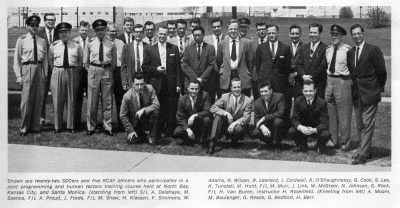
Shown are twenty-two
SDCers and five RCAF officers who participated in a ioint
programming and human factors training course
held at North Bay,
Kansas City, and Santa Monica: (standing from left) Sf L A. Delahaye, M.
Spence, S/L A. Proud, J. Forde, F/ L M.
Shaw, H. Klassen. F. Simmons, W.
Adams, R. Wilson, R. Leonard, J. Coldwell, R. O'Shaughnessy, G.
Cook,S. Lee, K.
Tunstall, M. Hunt, F/ L M. Muir, J. Link, M. McGreer, N. Johnson, G.
Rock,
F/ L H. Van Buren, Instructor H. Rosenfeld. (Kneeling from left) A. Moore,
M. Boulanger, G.
Reade, G.
Bedford, H. Barr.
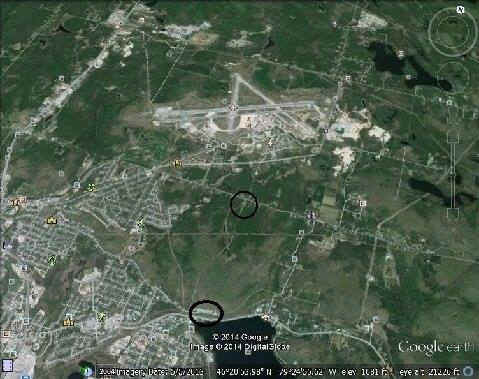 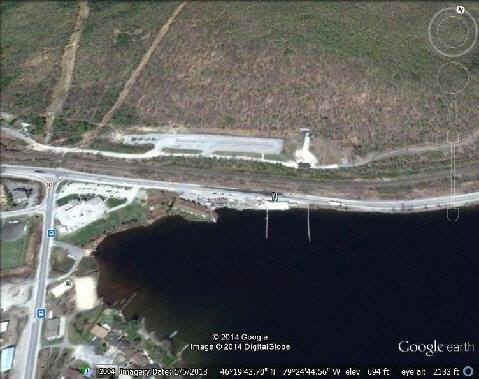
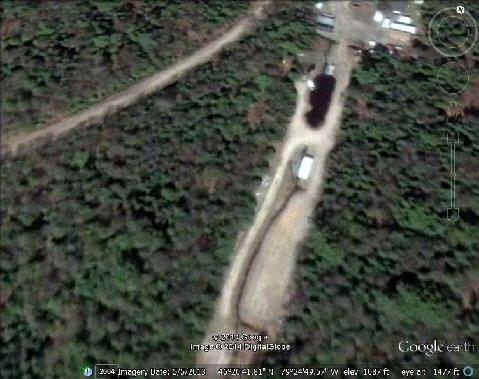
|







